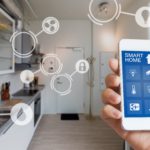 A number of technologies fall guilty of excessive hype and expectations that are divorced from reality. Early adopters often seem to get bragging rights from their purchases and little else. Does the same apply to early adopters of smart home technologies? That was the question posed by recent research, which set out to explore why take up of smart home technology is lower than expected.
A number of technologies fall guilty of excessive hype and expectations that are divorced from reality. Early adopters often seem to get bragging rights from their purchases and little else. Does the same apply to early adopters of smart home technologies? That was the question posed by recent research, which set out to explore why take up of smart home technology is lower than expected.
Advocates suggest that the lacklustre demand is due to a combination of affordability and installation difficulties, but the reality is that the challenges are plentiful for the new technology.
The smart home sector has often been dubbed a solution in search of a problem, and whilst there are a range of smart home technologies, doubts persist as to just what service they aim to provide. For many, it has failed to overcome the image of something that provides men with the latest toy to play with.
The researchers examined the household of 31 early adopters, and three main type of user emerged:
- Those who deployed smart home technology to enhance security of their home
- Those who wished to automate various tasks to enhance their productivity
- Those who wish to improve the look or ambience of their home
The ‘3Ps’ of protection, productivity and pleasure themselves threw up a number of interesting nuances. For instance, users who mainly sought to improve the security of their property installed smart cameras to help keep an eye on the home (and its inhabitants). This kind of technology was often used by people who were away from home a lot, or when people had dependents with disabilities.
For those seeking to enhance their productivity however, the aim was more to reduce the physical or mental effort involved in performing various daily tasks. This would include utilizing technology such as automated lighting and heating. These users would also use technology to coordinate activities by using technology such as the various voice assistants now on the market.
Last, but not least, were those consumers utilizing smart home technology for pleasurable purposes. Smart lighting and speakers were common technologies for this group, who were also frequent consumers of automated water features. These users were striving to create a relaxing and pleasurable home environment to try and replicate that found on holiday. Home cinemas and other forms of indoor entertainment were also commonly deployed.
Limits to growth
The research also uncovered a number of potential limits to growth in this market. For instance, when smart home technology was being used to help care for others, there is usually a high level of confidence in their technical capability, so setting up the systems was not a problem. These users did however have concerns around the security and privacy of the systems, especially in households where there was less technical ability.
The challenges involved in both setting up and maintaining smart homes can also erode any real or perceived productivity gains the technology provides. Users would frequently have to do considerable research when setting up new devices, whilst maintenance was an ongoing chore. Much of this extra work was done by the men of the household, who often gained enjoyment from these technical tasks.
There were also concerns raised about the environmental impact of the technology, especially in terms of energy usage. This had an obvious cost to the household budget, but also to the wider planet, which was a concern of users.
It was also interesting to note that most users of smart home technology expressed a desire to increase the value of their home, which obviously had limited value for those in rented accommodation. When coupled with the structural changes often required to install smart home devices, this often limited the appeal for renters.
With new technologies it is always useful to gain a greater understanding of who early adopters are and what they want to get from the technology. This study is one of the first to do just that with adopters of smart home technology.